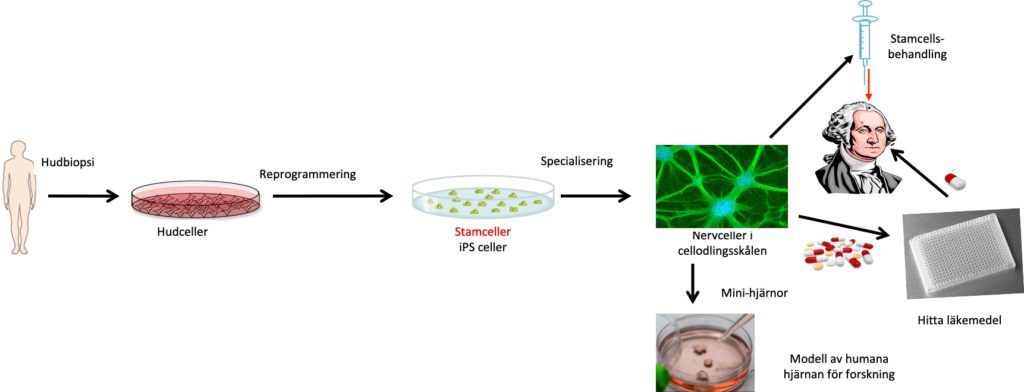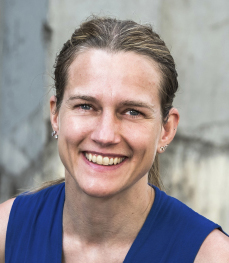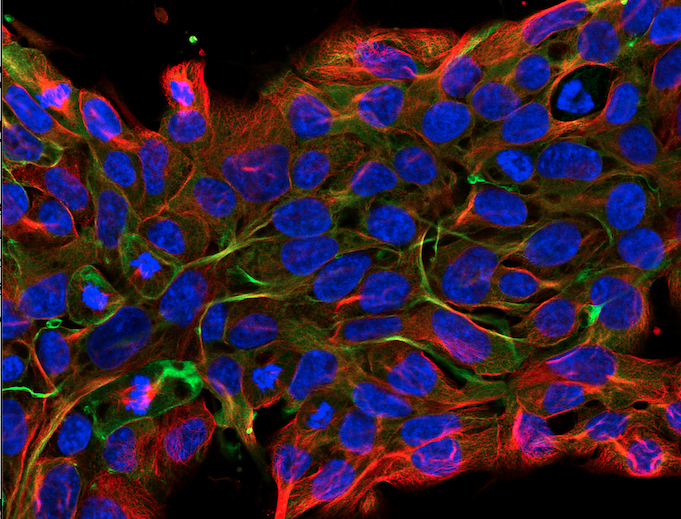The following case is an example of how the Intellectual Asset Management (IAM) framework can be used to help a researcher prioritize different utilization opportunities. This example is provided by Karolinska Institute and written in collaboration with Anna Falk, a research group leader at the Department of Neuroscience.
Research focus and activity field
The focus of Anna Falk’s research is on reprogramming somatic cells, typically from biopsied skin cells, to induced pluripotent stem (iPS) cells which can then be used, following neural differentiation, to create and study cellular models of the healthy and diseased human brain. This process enables researchers to study and understand the difference between normal and less functional neurons due to disease.
The differentiated cells can also be used for transplantation therapy in animals, and in the future humans. Developing these current and future therapies requires expert knowledge of, and years of experience with, advanced reprogramming technologies and techniques to culture human iPS cells. Because of the many benefits of working with iPS cells, the need for such knowledge has grown significantly in the national and international research community. To meet this need, and making use of her groups expertise in the field, Anna Falk set-up a core facility (iPS Core) that provides reprogramming somatic cells, iPS cells, and neural differentiation to research customers in a fee-for-service model.

In addition to the Falk group’s research and core facility activities, they have also started Stamcellsfabriken, a science communication and educational platform written in Swedish, as a way to increase the general knowledge about the science behind stem cells and their potential use in research and in therapies. “The neuroscience currently being taught to students is outdated and typically lacks knowledge about adult neurogenesis, thus there is need for educational material and outreach to provide an understanding of the latest research and potential therapies for students, patient organisations, and educators” – says Anna Falk.
Mapping the research group’s knowledge assets and interest led to clarity in focus

The Falk lab has been working to determine which aspects of their research can and should be utilized; and if so, what is the best way to go about doing that. With help from the Grants Office and KI Innovations AB taking her through the IAM process, Anna gained insights into what assets her group has developed, how to think about ownership and IP protection, and the steps to take for greater societal impact (through education, outreach, and even potentially commercial opportunities).
”For me, the IAM framework helped to prioritize my time, in a systematic and focused way, by scrutinizing what assets we have in my research group; how mature they are; what impact they can make; and how interested I am in following them. During the process, the assets panned out into three different areas that we continued to dig into.
- Clinical iPS cells for future advanced therapy medicinal products (ATMP) production- this has a great potential for impact, but currently very immature worldwide. Many questions still need to be sorted out, from a legal, ethical, technical, financial, and pre-clinical standpoint. However much of the basic science is done. We will continue our research and development preparations while these complex issues are being addressed by the different regulatory agencies.
- We are interested in replicating the iPS Core as a company, executing reprogramming, stem cell culture and differentiation services to customers in industry. Our continued development of different platforms at the iPS Core drives this forward, and at the point when the iPS Core can lineup a number of industrial customers, it could be possible to start a company as much of the technical knowledge already exists.
- Stamcellsfabriken, our communication project written in Swedish, aims to inform the public, and to drive the dialogue about stem cells. This project could be driven as an educational initiative.
By the end of the IMP project I have gained a better view over what in my daily work as a research group leader and core facility director would be of interest for future utilization and impact impact (through education, outreach, and even potentially commercial opportunities). ” – Anna Falk.
Contact info
Anna Falk
Karolinska Institute, anna.falk@ki.se
Sophia Savage
Karolinska Institute, sophia.savage@ki.se
Kerstin Lundin
Karolinska Institute, kerstin.lundin@ki.se
Patrik Blomquist
KI Innovations, patrik.blomquist@kiinnovations.se
